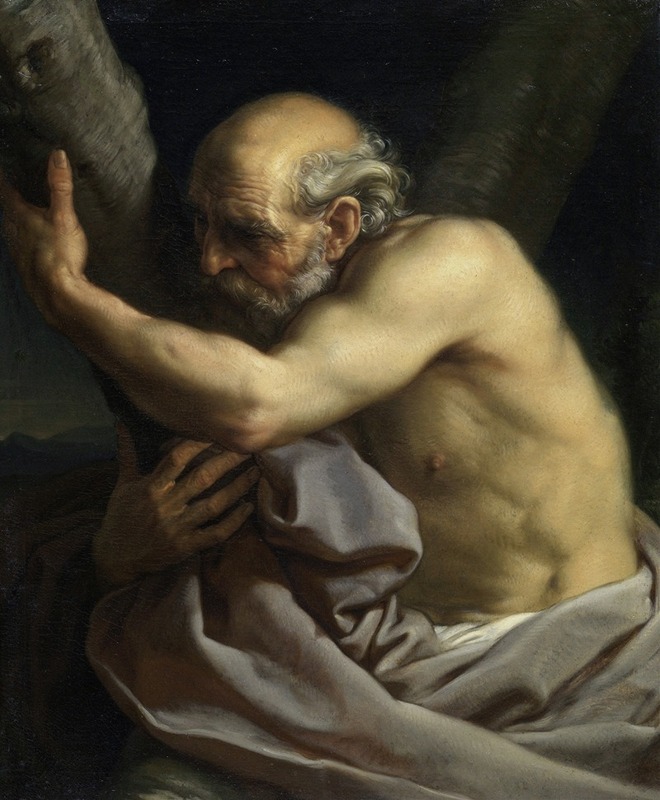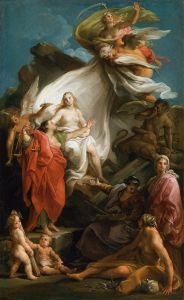
Saint Andrew
A hand-painted replica of Pompeo Batoni’s masterpiece Saint Andrew, meticulously crafted by professional artists to capture the true essence of the original. Each piece is created with museum-quality canvas and rare mineral pigments, carefully painted by experienced artists with delicate brushstrokes and rich, layered colors to perfectly recreate the texture of the original artwork. Unlike machine-printed reproductions, this hand-painted version brings the painting to life, infused with the artist’s emotions and skill in every stroke. Whether for personal collection or home decoration, it instantly elevates the artistic atmosphere of any space.
Pompeo Batoni's "Saint Andrew" is a religious painting created by the renowned Italian artist Pompeo Batoni, who was active during the 18th century. Batoni, celebrated for his skill in portraiture and religious art, was a prominent figure of the late Baroque and early Neoclassical periods. His works often combined meticulous attention to detail with a refined sense of composition, and "Saint Andrew" is no exception.
The painting depicts Saint Andrew, one of the twelve apostles of Jesus Christ, who is traditionally recognized as the patron saint of Scotland, Russia, and several other countries. Saint Andrew is often identified by the presence of a diagonal cross, also known as a saltire, which is associated with his martyrdom. According to Christian tradition, Saint Andrew was crucified on a cross of this shape, which has since become a symbol linked to his legacy.
In Batoni's portrayal, Saint Andrew is shown with a serene and contemplative expression, emphasizing his spiritual devotion and martyrdom. The artist's use of light and shadow highlights the saint's features and creates a sense of depth, drawing the viewer's attention to the figure's face and the symbolic elements within the composition. The painting reflects Batoni's mastery of color and his ability to convey emotion through his subjects.
While the exact date of the painting's creation is not definitively documented, it is consistent with Batoni's body of work during the mid-18th century, a period when he was highly sought after for both religious commissions and portraits of European nobility. The painting is an example of Batoni's ability to blend the grandeur of Baroque art with the emerging clarity and restraint of Neoclassicism.
"Saint Andrew" is housed in the Kunsthistorisches Museum in Vienna, Austria, where it is part of the museum's extensive collection of European paintings. The work is admired for its technical excellence and its ability to convey the spiritual significance of its subject.
This painting serves as a testament to Batoni's reputation as one of the leading painters of his time, and it continues to be appreciated for its artistic and historical value.


















